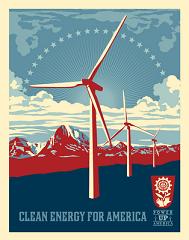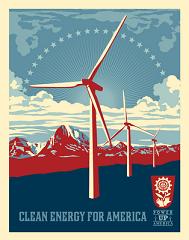This post was co-authored by Center for American Progress Vice President for Energy Policy Kate Gordon, Senior Fellow Bracken Hendricks, and Policy Analyst Benjamin Goldstein. It was cross-posted from Wonk Room.
 The United States is having the wrong public debate about global warming. We are asking important questions about pollution caps and timetables, carbon markets and allocations, but we have lost sight of our principal objective: building a robust and prosperous clean energy economy. This is a fundamentally affirmative agenda, rather than a restrictive one. Moving beyond pollution from fossil fuels will involve exciting work, new opportunities, new products and innovation, and stronger communities. Our current national discussion about constraints, limits, and the costs of transition misses the real excitement in this proposition. It is as if, on the cusp of an Internet and telecommunications revolution, debate centered only on the cost of fiber optic cable. We are missing the big picture here.
The United States is having the wrong public debate about global warming. We are asking important questions about pollution caps and timetables, carbon markets and allocations, but we have lost sight of our principal objective: building a robust and prosperous clean energy economy. This is a fundamentally affirmative agenda, rather than a restrictive one. Moving beyond pollution from fossil fuels will involve exciting work, new opportunities, new products and innovation, and stronger communities. Our current national discussion about constraints, limits, and the costs of transition misses the real excitement in this proposition. It is as if, on the cusp of an Internet and telecommunications revolution, debate centered only on the cost of fiber optic cable. We are missing the big picture here.
Let’s be clear: Solving global warming means investment. Retooling the energy systems that fuel our economy will involve rebuilding our nation’s infrastructure. We will create millions of middle-class jobs along the way, revitalize our manufacturing sector, increase American competitiveness, reduce our dependence on oil, and boost technological innovation. These investments in the foundation of our economy can also provide an opportunity for more broadly shared prosperity through better training, stronger local economies, and new career ladders into the middle class. Reducing greenhouse gas pollution is critical to solving global warming, but it is only one part of the work ahead. Building a robust economy that grows more vibrant as we move beyond the Carbon Age is the greater and more inspiring challenge.
Reducing greenhouse gas emissions to avert dangerous global warming is an environmental challenge, but it is also an economic, national security, societal, and moral imperative. The “cap and trade” provisions, which will set limits on pollution and create a market for emissions reductions that will ultimately drive down the cost of renewable energy and fuel, represent a very important first step and a major component in the mix of policies that will help build the coming low-carbon economy. But limiting emissions and establishing a price on pollution is not the goal in itself, and we will fall short if that is all we set out to do. Rather, cap and trade is one key step to reach the broader goal of catalyzing the transformation to an efficient and sustainable low-carbon economy. With unemployment at 9.5 percent, and oil and energy price volatility driving businesses into the ground, we cannot afford to wait any longer. It is time for a legislative debate over a comprehensive clean-energy investment plan. We need far more than cap and trade alone.
Importantly, many elements of this positive clean-energy investment framework are already codified within existing legislation such as the American Clean Energy and Security Act, passed by House of Representatives earlier this year. But with all the attention given to limiting carbon, too little attention has been placed on what will replace it. These critical pieces of America’s clean-energy strategy should be elevated in the policy agenda and political debate as we move forward into the Senate, and used to help move legislation forward that advances a proactive investment and economic revitalization strategy for the nation.
Read the Center for American Progress report, The Clean-Energy Investment Agenda.



